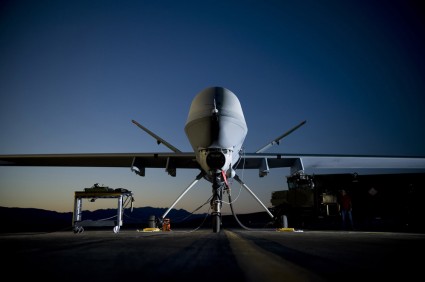SCOUT: Intelligent, Autonomous, Adaptive UAV Teamwork for Air Force & NASA
|
Stottler Henke developed an initial prototype of SCOUT (Smart COordination of UAV Teams) for NASA’s Armstrong Flight Research Center. SCOUT is now being further developed for the US Air Force. SCOUT is realizing the potential of intelligent Unmanned Aerial Vehicle (UAV) / drone team coordination and control in an intelligent, predictable, and robust way that calls for minimal human oversight. Also, when communication isn’t possible, SCOUT will enables small groups of UAVs to engage in autonomous, intelligent, adaptive teamwork. SCOUT weds the real-time planning, scheduling, and resource allocation of Stottler Henke’s Aurora to the concept of a play (from sports), represented using behavior transition networks (BTNs) created in Stottler Henke’s Brandon Hall award winning, open-source SimBionic. SCOUT’s Probabilistic Roadmap Planner (PRMP), originally developed for the U.S. Army AATD to make UAVs more evasive and responsive to obstacles and threats. SCOUT is designed to plan detailed real-time UAV routes to rapidly satisfy and optimize a large number of simultaneous constraints and objectives. By automating the ordinarily time-consuming and labor-intensive task of managing multiple teams of unmanned vehicles, SCOUT results in a significantly reduced cognitive load on human users. Beyond the Air Force and NASA, potential applications of SCOUT include—to name just a few—disaster response, search and rescue, fire-fighting, and rapid response as well as autonomous exploration of indoor environments by the U.S. Army and U.S. Marine Corps. |
